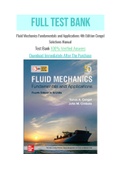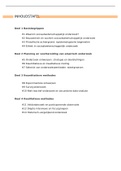Tentamen (uitwerkingen)
Fluid Mechanics Fundamentals and Applications 4th Edition Cengel Solutions Manual With Question and Answers, From Chapter 1 to 15
Vak
Fluid Mechanics Fundamentals and Applications 4th
Instelling
Fluid Mechanics Fundamentals And Applications 4th
Fluid Mechanics Fundamentals and Applications 4th Edition Cengel Solutions Manual .
[Meer zien]
Voorbeeld 4 van de 1677 pagina's
Geupload op
26 oktober 2022
Aantal pagina's
1677
Geschreven in
2022/2023
Type
Tentamen (uitwerkingen)
Bevat
Vragen en antwoorden
Instelling
Fluid Mechanics Fundamentals and Applications 4th
Vak
Fluid Mechanics Fundamentals and Applications 4th
Door: seongjoo0420 • 4 weken geleden
Door: herbertchao • 1 jaar geleden
€17,88
100% tevredenheidsgarantie
Direct beschikbaar na betaling
Zowel online als in PDF
Je zit nergens aan vast
Full Test Bank





